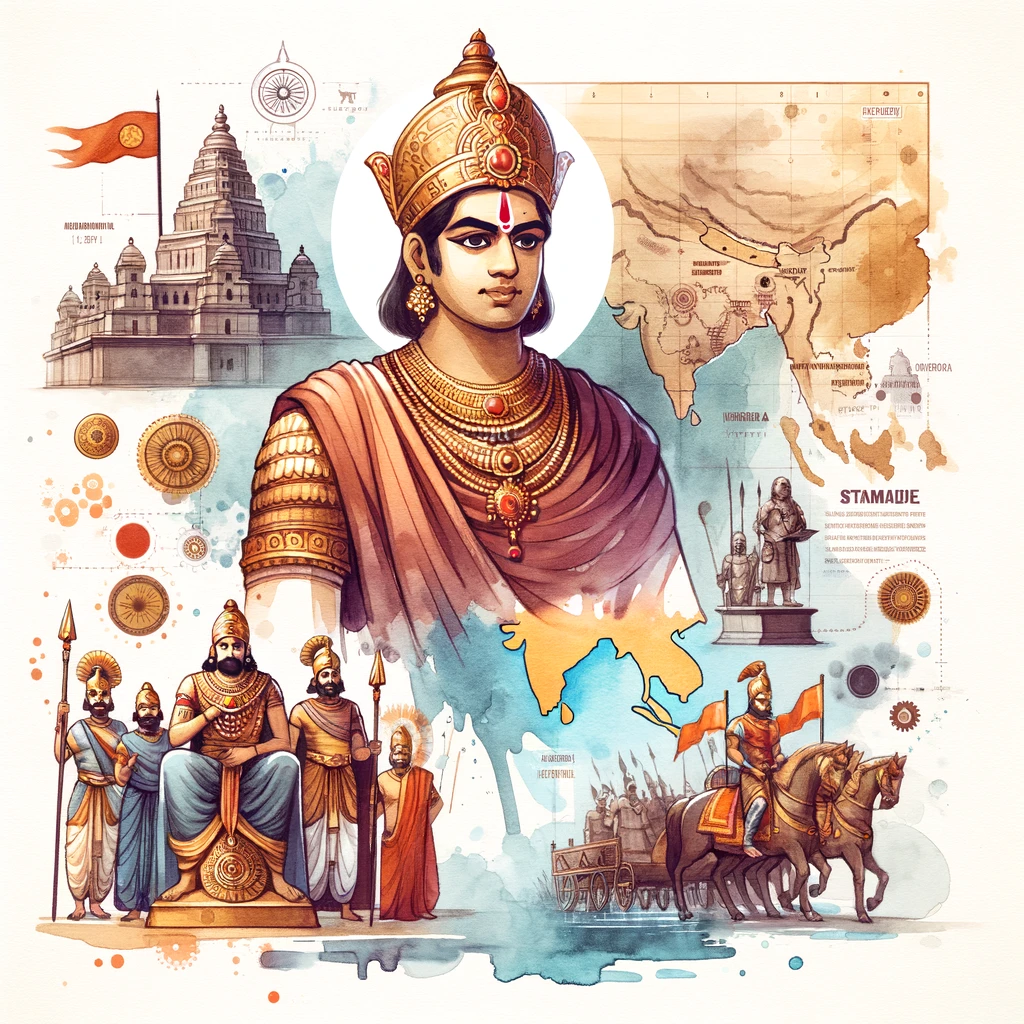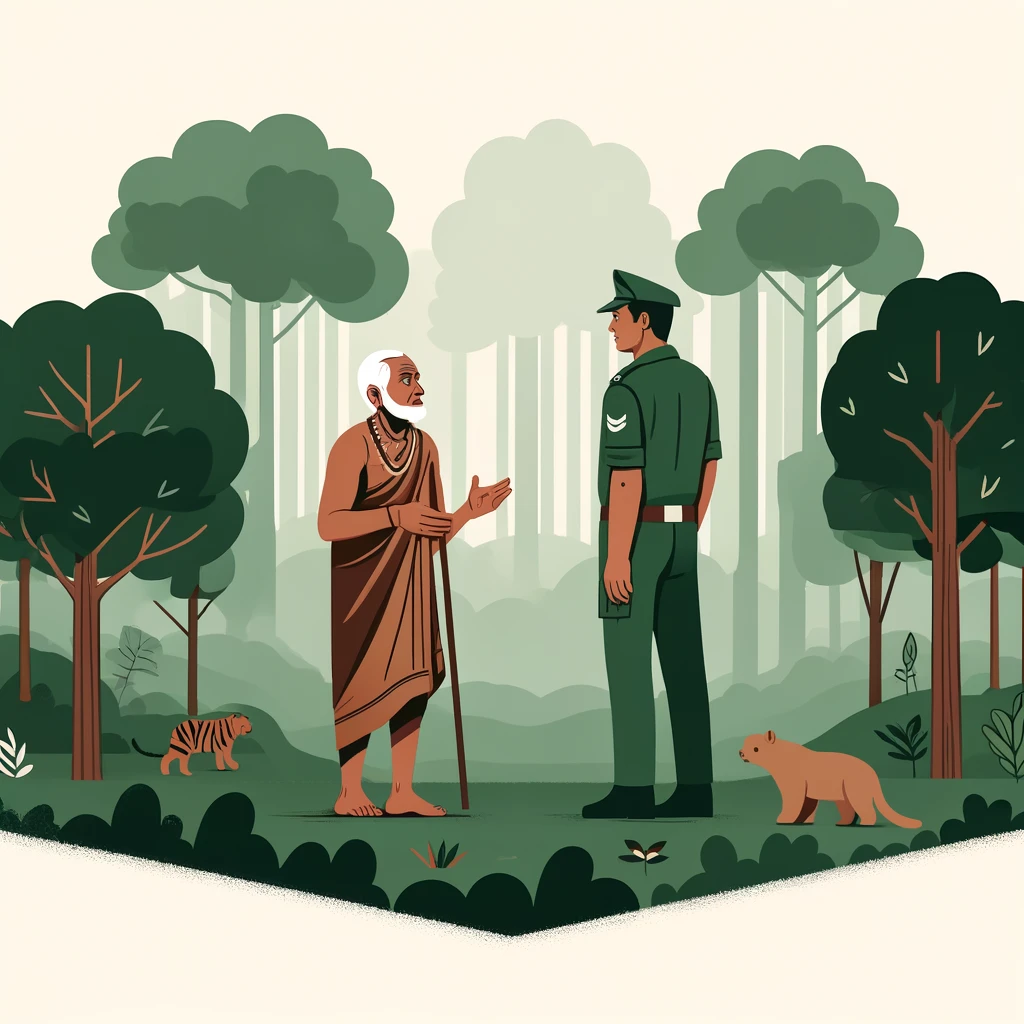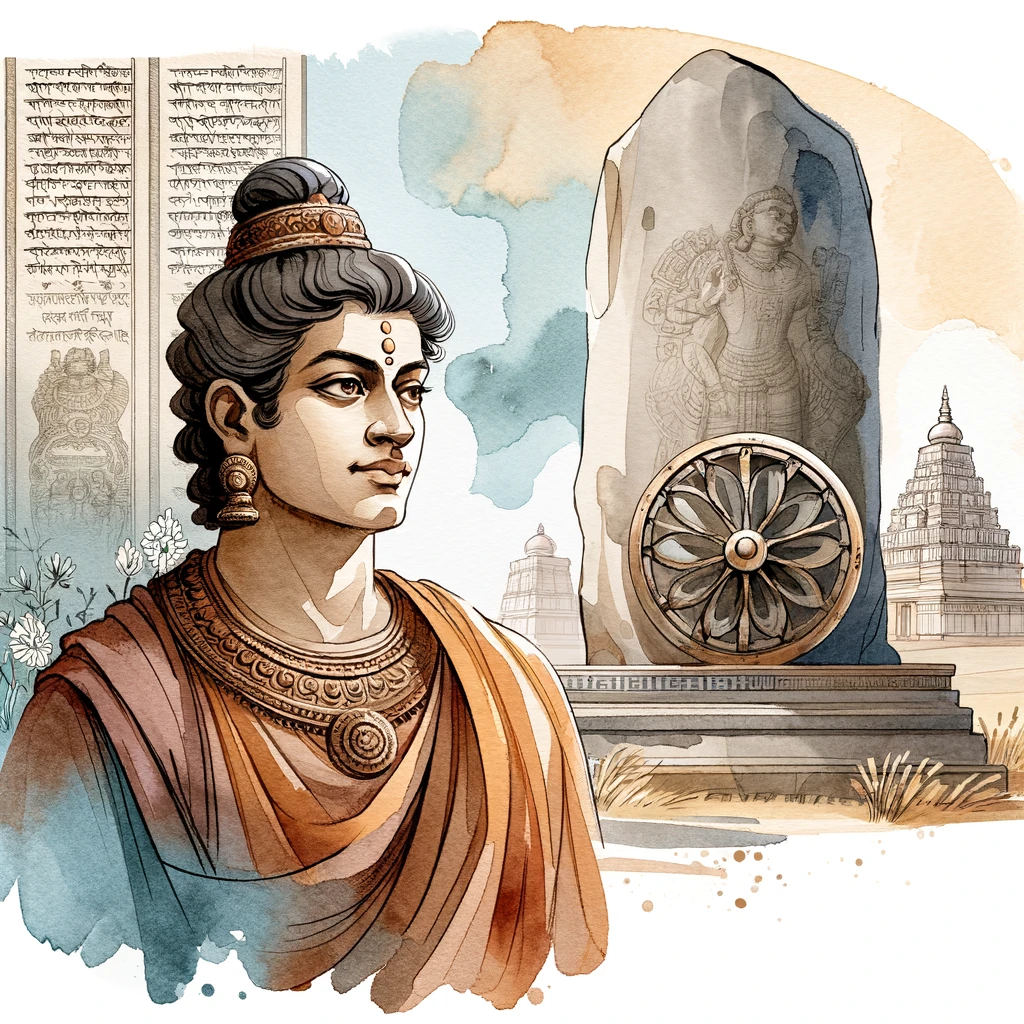The term “Golden Age of India” often refers to the period during the Gupta Empire, which lasted from approximately 320 CE to 550 CE. This era is celebrated for its remarkable achievements in various fields, including science, mathematics, astronomy, literature, and education. Under the reign of Gupta rulers such as Chandragupta I, Samudragupta, and Chandragupta II, India experienced a flourishing of culture and intellectual activity that laid the foundation for future advancements.
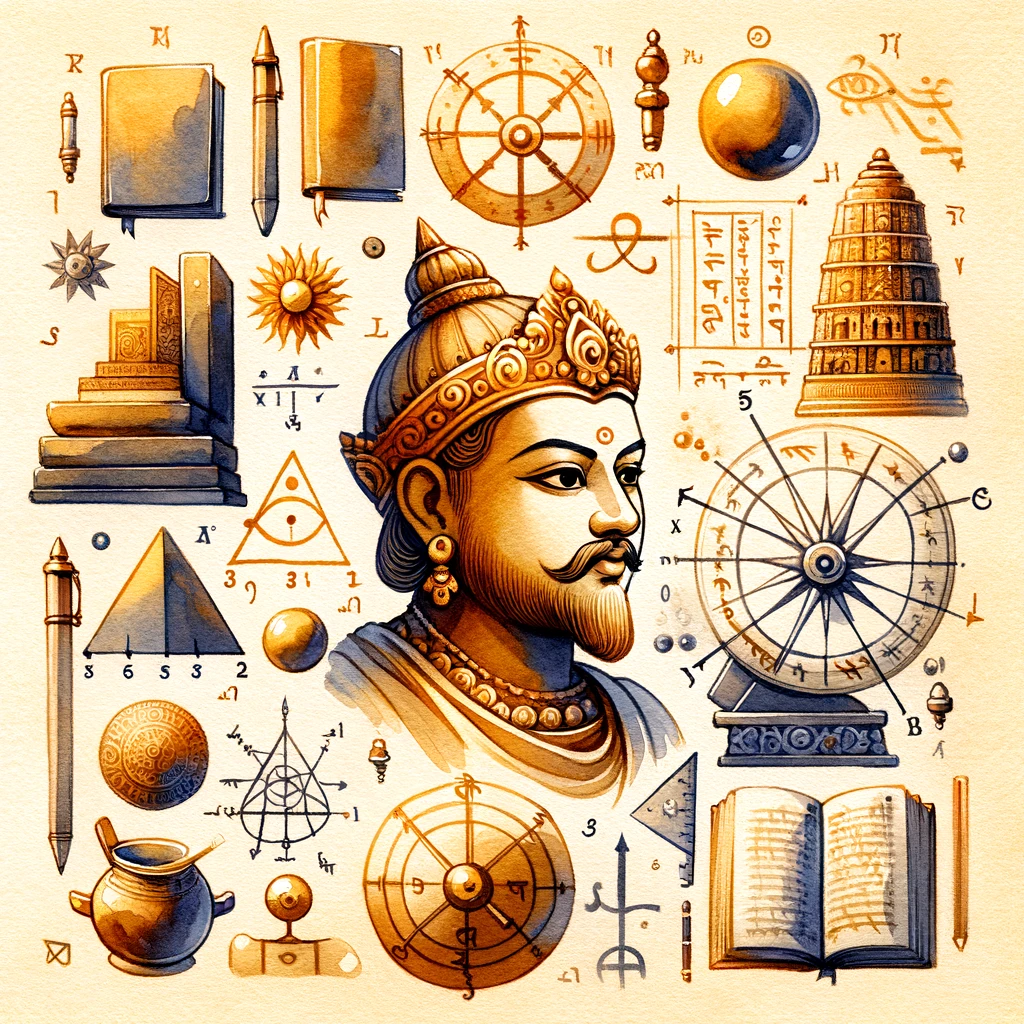
Developments in Science, Mathematics, and Astronomy
Science
The Gupta period witnessed significant progress in various scientific fields, notably medicine and metallurgy.
Medicine
- The practice of Ayurveda, the traditional system of Indian medicine, was systematized during this time. Texts like the “Sushruta Samhita” and “Charaka Samhita” were important medical treatises that detailed surgical procedures, medicinal plants, and disease treatments.
- Sushruta, often called the “Father of Surgery,” described numerous surgical instruments and techniques, including plastic surgery and cataract operations.
Metallurgy
- The iron pillar of Delhi, erected during the Gupta period, exemplifies the advanced metallurgical skills of the time. The pillar, which has resisted corrosion for over 1,600 years, demonstrates the Gupta mastery of ironworking.
- The period also saw the production of high-quality steel, known as Wootz steel, which was highly prized in international trade.
Mathematics
Mathematics made groundbreaking advancements during the Gupta era, with significant contributions that influenced later developments worldwide.
Aryabhata
- Aryabhata, one of the most renowned mathematicians and astronomers of the Gupta period, authored the “Aryabhatiya,” a comprehensive work on mathematics and astronomy.
- He introduced the concept of zero as a number and developed the place-value system, which is fundamental to modern mathematics.
- Aryabhata’s calculations for pi (π) and the length of the solar year were remarkably accurate for his time.
Other Contributions
- The Gupta mathematicians made significant advances in algebra, arithmetic, and trigonometry. They worked on quadratic equations and sine tables and developed a sophisticated numeral system, which later became known as Arabic numerals through transmission to the Arab world.
Astronomy
Astronomy flourished during the Gupta period, with substantial contributions that laid the groundwork for future astronomical studies.
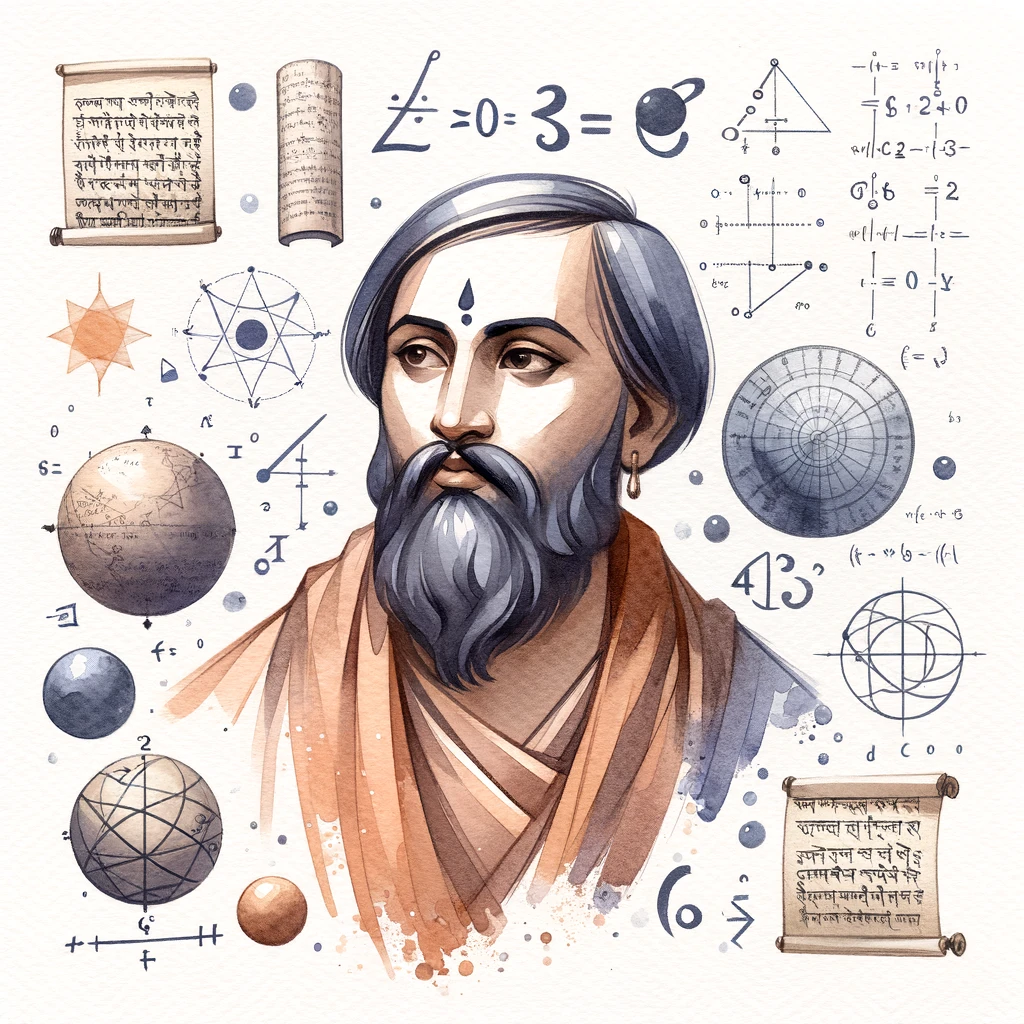
Aryabhata’s Astronomy
- Aryabhata proposed that the Earth rotates on its axis, challenging the then-prevailing view of a static Earth. He also explained the causes of solar and lunar eclipses scientifically.
- His work included the calculation of the Earth’s circumference and the distances of celestial bodies, which were impressively accurate given the limited observational tools available.
Other Astronomers
Varahamihira, another prominent astronomer, authored the “Pancha-Siddhantika,” a compendium of five earlier astronomical treatises. His work synthesized and expanded on earlier knowledge, contributing to the fields of astrology and astronomy.
Literature and Education
The Gupta period is also renowned for its literary and educational achievements. This era saw the creation of classical Sanskrit literature and the establishment of educational institutions that attracted scholars from all over the world.
Literature
The literary output of the Gupta period was prolific, with works spanning poetry, drama, prose, and philosophy.
Kalidasa
Kalidasa, one of the greatest poets and dramatists in Indian history, flourished during this period. His works are celebrated for their lyrical beauty and profound insight into human nature. Some of his most famous works include:
- Shakuntala (Abhijnanasakuntalam): A play that tells the story of Shakuntala and King Dushyanta, known for its exquisite portrayal of love and separation.
- Meghaduta (The Cloud Messenger): A lyrical poem in which a yaksha (nature spirit) sends a message to his distant wife through a cloud.
- Raghuvamsha and Kumarasambhava: Epic poems that recount the stories of the Raghu dynasty and the birth of Kartikeya, respectively.
Other Literary Works
- The period also saw the compilation of various Puranas, which are encyclopedic texts covering mythology, history, and cosmology.
- Philosophical texts like the “Nyaya Sutras” and “Vaisheshika Sutras” were also composed, advancing the study of logic and metaphysics.
Education
The Gupta period was marked by the establishment and flourishing of educational institutions that became centers of learning and attracted scholars from different regions.
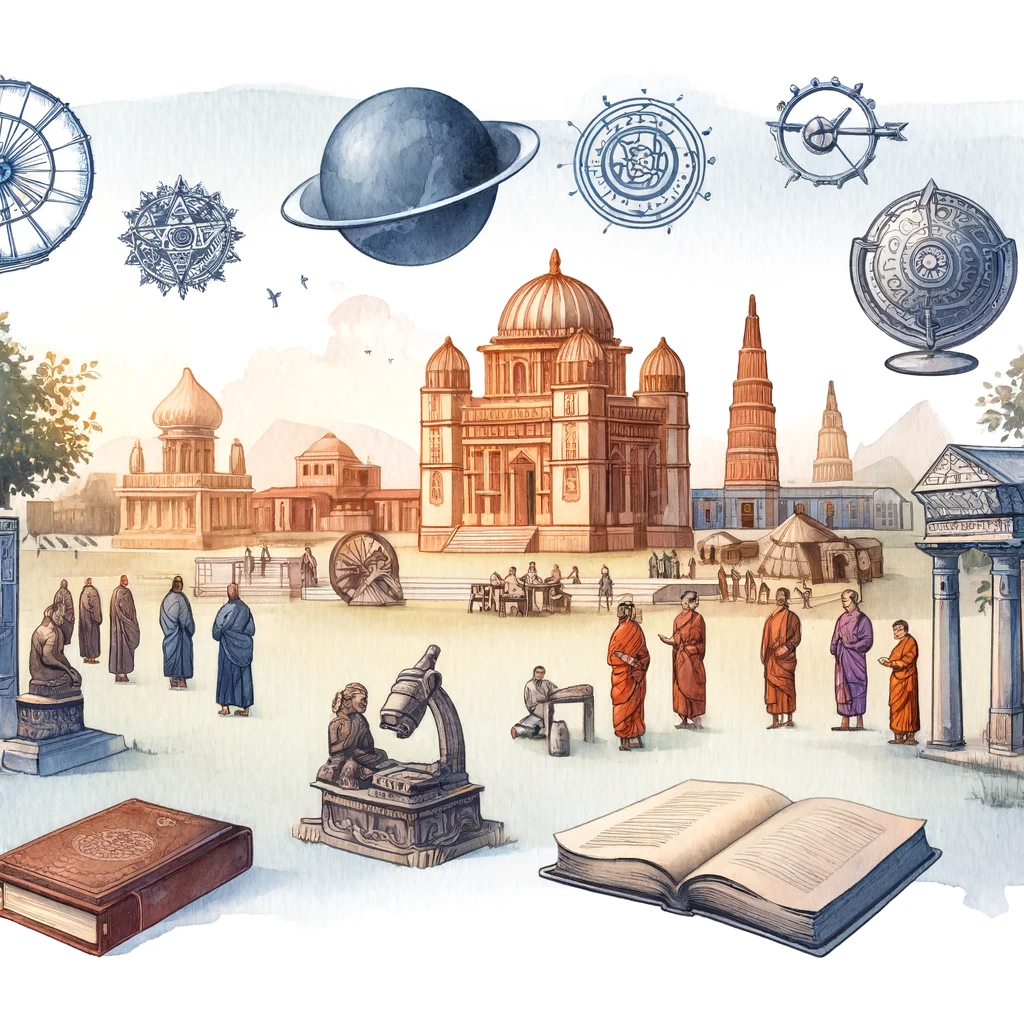
Universities
- Nalanda University: One of the world’s first residential universities, Nalanda attracted students and scholars from across Asia. It offered a wide range of subjects, including theology, grammar, logic, astronomy, medicine, and mathematics.
- Takshashila (Taxila): Although it predates the Gupta period, Takshashila continued to thrive as a center of learning during this era, offering courses in various disciplines.
Scholarship and Learning
- Education during the Gupta period was primarily conducted in Sanskrit, and the curriculum covered both religious and secular subjects.
- The emphasis on scholarly pursuits and intellectual debates helped foster a culture of learning and inquiry that had a lasting impact on Indian civilization.
Conclusion
The Golden Age of India during the Gupta Empire was a period of unparalleled achievements in science, mathematics, astronomy, literature, and education. The advancements made during this era laid the foundation for future developments and had a profound influence on subsequent civilizations. Understanding these contributions is essential for appreciating the rich cultural and intellectual heritage of India. For UPSC aspirants, a thorough grasp of this period provides valuable insights into the historical context of India’s scientific and cultural achievements.

